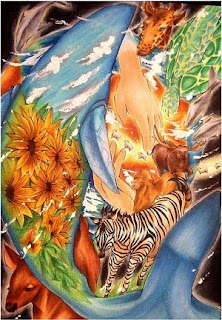Jason and the quest for the Golden Fleece, is it fact or fiction? Is it true that Jason helped the old woman cross the river? Is it true the woman was Hera? So many questions, yet the answer still not answered. After studying the cycle of the hero, it surely tells me that Jason was a hero who fought, and who returned.
In Jason and the quest for the Golden Fleece, Jason “amulet” was Hera, who was impressed not only by his looks, but also his kind heart. She helped him throughout the tough voyage, and had an eye on him at all times. Giving tests was another part of the journey Jason had to go through. To test Jason’s kindness Hera herself challenged Jason. Disguised as an old woman Hera used the help of Jason’s strength to cross a river, but as he took each step Hera got heavier and heavier and Jason never giving up. From then on Hera had always been a good luck charm for Jason.
According Wikipedia.com there were at least 50 crew members on the Argo. All 50 were helpers, who held his hand throughout the journey. After the “final battle” which in Jason’s case was stealing the Golden Fleece, he had to face King Pelias and his lover Medea helped him. The Golden Fleece was Jason’s “elixir”. He had to crash down barriers to reach his goal, and to leave a mark. Jason returned but didn’t live for long. His life ended because of his broken promise. He was successful but lost everything. The journey that lasted over 10 years was after all of no use.
There are many interpretations of the myth, Jason and the quest for the Golden Fleece. Which one is true could get controversial depending on the way people think, but the facts remain whereas the hearsay continues and has developed the myth. In most versions of the myth Jason died due to the piece of oak on the Argo, which was supposed to be a helping hand, but killed him instead.
Jason is known to be strong, determined. Facing whatever comes in his way, however, he does have the advantage of Hera and Medea. The 2 together did wonders. He breaks his promise because of power. The power, the love, what to pick?! And Jason chose power which didn’t do him any good.
Medea is the young woman fighting for her love, but when the love is forgotten, she uses her powers for not for defending Jason this time, but destroying him and thus, she does.
Hera has a totally different side to her in Jason and the quest for the Golden Fleece. After reading about her in Hercules, it shows how she can be when she detests and when she admires someone. There’s a great contrast which surprises me, because she is a savior in this myth whereas Hercules she is quite the opposite.
 For many years people thought of the myth as a mere legend. But archaeologists recently discovered a stone from the ancient age. This stone was found in the modern day Colchis. A version of the myth (Jason and the Argonauts) is drawn onto the stone. The drawings indicate that this happened during an early period of time, and the drawings clearly show each part of the story. A cave was also discovered known to be the home of Jason, where he grew up. Ancient technology was used to make the boat, the great Argo, used to travel around the world to face his challenge. Shockingly a picture was found of the crew involved in the expedition, they are said to be descendants of Medea herself. People in Greek still butcher fleeces, on special occasions. Hanging the skin on trees and eating the flesh. Even the weather connects to the fact that the Argonauts and Jason had to take a halt for the bad weather, and high tide, disturbing the ship’s path. Geographical and historical facts support the idea of Jason and the quest for the Golden Fleece being more than just a myth.
For many years people thought of the myth as a mere legend. But archaeologists recently discovered a stone from the ancient age. This stone was found in the modern day Colchis. A version of the myth (Jason and the Argonauts) is drawn onto the stone. The drawings indicate that this happened during an early period of time, and the drawings clearly show each part of the story. A cave was also discovered known to be the home of Jason, where he grew up. Ancient technology was used to make the boat, the great Argo, used to travel around the world to face his challenge. Shockingly a picture was found of the crew involved in the expedition, they are said to be descendants of Medea herself. People in Greek still butcher fleeces, on special occasions. Hanging the skin on trees and eating the flesh. Even the weather connects to the fact that the Argonauts and Jason had to take a halt for the bad weather, and high tide, disturbing the ship’s path. Geographical and historical facts support the idea of Jason and the quest for the Golden Fleece being more than just a myth.
Jason, the one who fought, the one who journeyed to the end of the world, could this myth be fact or fiction?
Picture of Jason- http://plt25.deviantart.com/art/Argonautica-136356095
Picture of Jason's Helmet- http://oicemano.deviantart.com/art/Jason-and-the-Argonauts-GC-Cov-59619987
Picture of The Argo (The Ship)- http://perzo.deviantart.com/art/Argo-on-Danube-103930429





